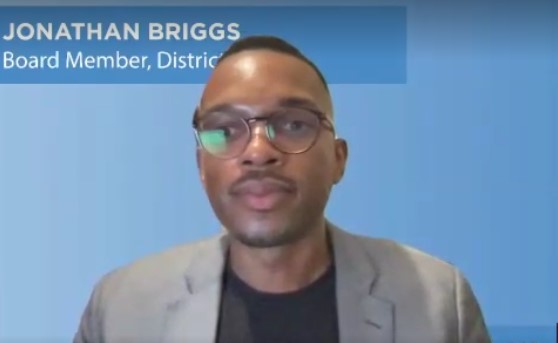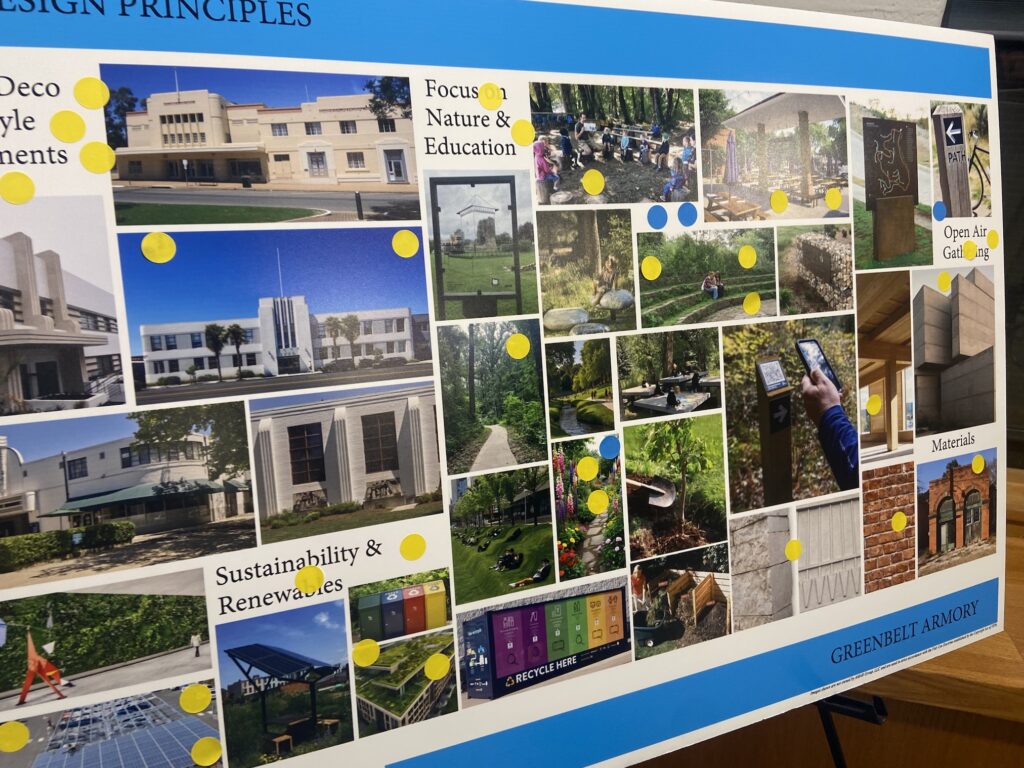District 2 Prince George’s County Public Schools (PGCPS) Board of Education member Jonathan Briggs met with the Greenbelt City Council in a September 25 worksession to give a summary of the current operations, concerns and policies for Greenbelt schools in this new school year. Stephenie Arcido from the Advisory Committee on Education (ACE) was also on hand to share the group’s latest efforts.
This is the third year in office for Briggs, who expressed that he endeavors to create an honest partnership with all the schools in his purview and develop a bridge between students, parents and staff to improve and ensure the best educational outcome.
Briggs explained that the Board is tasked with overseeing PGCPS’ fiscal, governance and operational policies and, along with Superintendent Millard House II, is responsible for the system’s day-to-day functions. House is in effect the sole employee of the Board and is subject to their evaluation.
Greenbelt includes six of District 2’s 17 schools, with an overall student population of over 15,000.
Shortages
Teacher shortages continue to be both a local and national issue, Briggs said. He stated that there are many initiatives in place to address this, such as hiring fairs, certification programs, professional development efforts and the recruitment of retired teachers. Establishing adequate teacher salaries is a priority.
Having enough crossing guards is another concern. This is handled mainly by the county’s police department. Mayor Emmett Jordan expressed the challenges faced in this position as many are asked to monitor different areas in the course of a day. The Safe Passage Initiative, begun in the southern section of the county, has now been applied countywide, said Briggs.
StopFinder App
PGCPS continues to use the StopFinder app to alert parents to school bus arrivals. Upgrades have been made to increase efficiency, said Briggs, but there are still some technical issues that will need to be addressed. Some routes have been consolidated, meaning fewer drivers and more students per bus.
Recreation
Council was eager to partner the city’s recreational needs with the city’s schools, such as the use of fields. Briggs said that he would work to get the issue on the board’s upcoming agenda, explaining that the Board’s Office of General Counsel would need to weigh in as well. He understood the frustration felt by all in what Councilmember Danielle McKinney described as “a spinning conversation” for years.
Overcrowding, Teacher Ratios
The high number of “temporaries” ‒ classrooms placed in trailers when there is insufficient space in the main school buildings ‒ that exist at most of the city’s schools was discussed. Space shortage remains the primary factor, but Briggs said that some temporaries are being used for specialty subjects.
This led to a discussion on the need for monitoring the influx of new students to the region. This is a major factor in the need to create new school boundaries to preserve the proper student-to-teacher ratios, said Briggs. He said that this issue is being analyzed on a regular basis. While he said that no new boundaries are planned, he could not guarantee that this necessity will not arise again. Generally, such considerations begin in October with ample notice made of any changes sent in December, he told council.
Briggs stated that all future school construction projects are contained in the Educational Facilities Master Plan. These projects are under regular review, factoring in data such as student population growth, he said. He said that no new plans are in place for Eleanor Roosevelt High School (which utilizes several temporary classrooms for space). Briggs said that funding for these capital projects comes from the county.
Briggs said that, while the recent Blueprint for Maryland’s Future law contains funding for school construction, counties must often still look for alternate revenue streams. The law also seeks to cap teacher salaries at $60,000, he said.
Jordan urged PGCPS to stay in constant conversation with the county’s agencies dealing with any future developments and construction to ensure the best possible outcomes for Greenbelt. Briggs said that the Board has input on all aspects of developments. The redevelopment of Beltway Plaza was mentioned, with its likely influx of many new students to Greenbelt.
DKFI Move
The permanent transition of Dora Kennedy French Immersion School (DKFI) to the location of Robert Goddard Montessori School on Good Luck Road was discussed. This will occur for the 2026-2027 school year. The current DKFI building will then be used by students of Springhill Lake Elementary School (SHL), while their new school is being built. Once it’s completed and the SHL students are relocated, the building will no longer be owned and maintained by PGCPS, said Briggs, and it may be turned over to the county. Council was keen to make use of this building and would much like to be involved in any future discussions on its purpose. Providing transportation for DKFI students to the new location is under consideration, said Briggs.
GES Internet Outage
Briggs said that House was made aware of the recent day-and-a-half internet outage at Greenbelt Elementary School (GES). The school’s phone lines only work when the internet does and there is a single landline, which meant that the phones at the school didn’t work. Briggs explained it as an outage in the Verizon network. Internet not only affects instruction but communication in and out of the building, said PTA President Jessica O’Roark, “When the internet is down, the phone lines are down,” said O’Roark. She believes the single landline in the building can be used to call out in an emergency but isn’t used to receive calls. In addition, cell phones often don’t have reception in the building due to its cinderblock construction. All present were concerned with the safety implications of this and were eager to develop new protocols to address this vital infrastructure issue and how to deal with emergencies. Briggs said he would email the superintendent about safety measures and communication protocol in those instances.
PGCPS allows cell phones in school, said Briggs, yet they are not to be used in normal circumstances during the school day. In the case of an emergency, mass autocalls are made to parents, he said. Councilmember Amy Knesel commented that this system is quite effective in her experience.
ESSER Funds
The possible use of the remaining approximately $780 million of the Elementary and Secondary School Emergency Relief (ESSER) funds was raised by resident John Appiah-Duffell. The deadline for allocation is September 30. If not allocated, these funds return to the federal government. Briggs said that as the PGCPS budget has already been ratified, that opportunity for use has likely ended.
Arcido said that ACE is eager to partner with all Greenbelt schools to provide assistance in any areas not fully addressed by PGCPS. ACE provides grants in several areas, like winter clothing. Briggs said that he would be happy to be a conduit for such efforts.
He also emphasized that he is always available for questions and concerns. Constituents can reach him via the PGCPS webpage and sign up to receive his newsletter.




